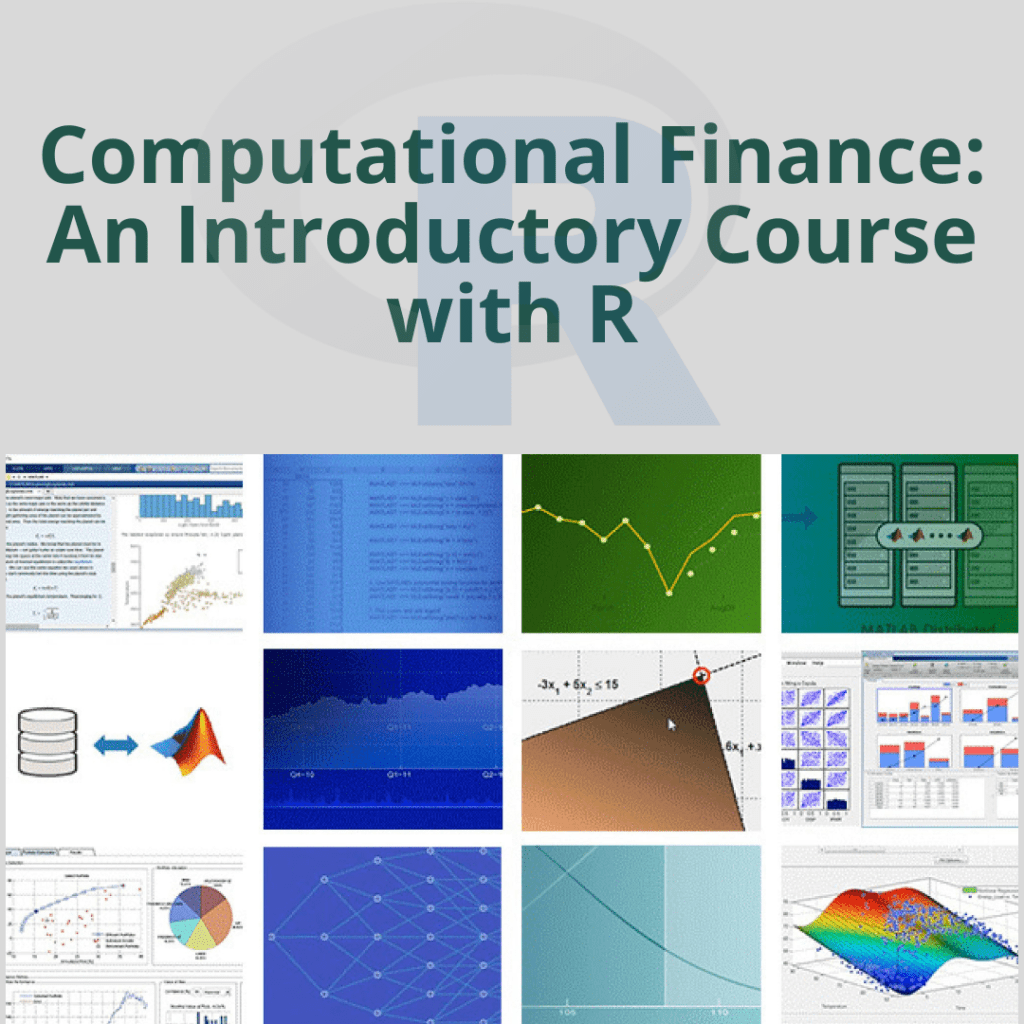Computational Finance: An Introductory Course with R: R is a popular open-source programming language and software environment for statistical computing and graphics. It is widely used in computational finance for data analysis, modeling, and visualization. R provides a vast array of tools and packages that can be used for financial data analysis and modeling, making it a powerful tool for computational finance. Some of the key packages in R for computational finance include:

Download(PDF)
Quantmod: This package provides tools for quantitative financial modeling and trading. It includes functions for downloading financial data, calculating technical indicators, and backtesting trading strategies.
Performance Analytics: This package provides functions for portfolio performance analysis and risk management. It includes tools for calculating portfolio returns, risk metrics, and asset allocation strategies.
TTR: This package provides technical analysis functions for financial time series data. It includes tools for calculating moving averages, trendlines, and other technical indicators.
dplyr: This package provides a grammar of data manipulation for transforming and summarizing financial data. It includes functions for filtering, grouping, and aggregating data.
ggplot2:ggplot2 for data visualization This package provides tools for creating high-quality visualizations of financial data. It includes functions for creating histograms, scatterplots, and line charts.
In addition to these packages, R also provides powerful tools for data import and export, database connectivity, and machine learning. These features make R a versatile tool for financial data analysis and modeling. Here are a few examples of using R for computational finance:
- Monte Carlo Simulation:
# Define parameters
S0 <- 100 # initial stock price
mu <- 0.05 # expected return
sigma <- 0.2 # volatility
T <- 1 # time horizon
N <- 252 # number of time steps
dt <- T/N # time step
# Simulate stock prices
set.seed(123)
t <- seq(0, T, by=dt)
W <- rnorm(N, mean=0, sd=sqrt(dt))
W <- c(0, cumsum(W))
S <- S0 * exp((mu - 0.5 * sigma^2) * t + sigma * W)
# Plot simulated stock prices
plot(t, S, type="l", xlab="Time", ylab="Stock Price")
- Option Pricing:
Option pricing is a key area of computational finance. Here’s an example of pricing a European call option using the Black-Scholes-Merton model in R:
# Define parameters
S0 <- 100 # initial stock price
K <- 105 # strike price
r <- 0.05 # risk-free rate
sigma <- 0.2 # volatility
T <- 1 # time horizon
# Calculate option price
d1 <- (log(S0/K) + (r + 0.5 * sigma^2) * T) / (sigma * sqrt(T))
d2 <- d1 - sigma * sqrt(T)
N_d1 <- pnorm(d1)
N_d2 <- pnorm(d2)
C <- S0 * N_d1 - K * exp(-r * T) * N_d2
# Print option price
cat("European call option price: ", C, "\n")
- Portfolio Optimization:
Portfolio optimization is the process of selecting a portfolio of assets that maximizes returns while minimizing risk. Here’s an example of portfolio optimization using the Markowitz model in R:
# Load library
library(quadprog)
# Define parameters
returns <- c(0.1, 0.2, 0.15, 0.18) # expected returns
covariance <- matrix(c(0.02, 0.01, 0.005, 0.01, 0.03, 0.02, 0.005, 0.02, 0.04), nrow=3) # covariance matrix
target_return <- 0.15 # target return
# Calculate optimal portfolio
n <- length(returns)
Dmat <- 2 * covariance
dvec <- rep(0, n)
Amat <- cbind(rep(1, n), returns)
bvec <- c(1, target_return)
sol <- solve.QP(Dmat, dvec, t(Amat), bvec)
weights <- sol$solution
# Print weights
cat("Optimal weights: ", weights, "\n")
Comments are closed.